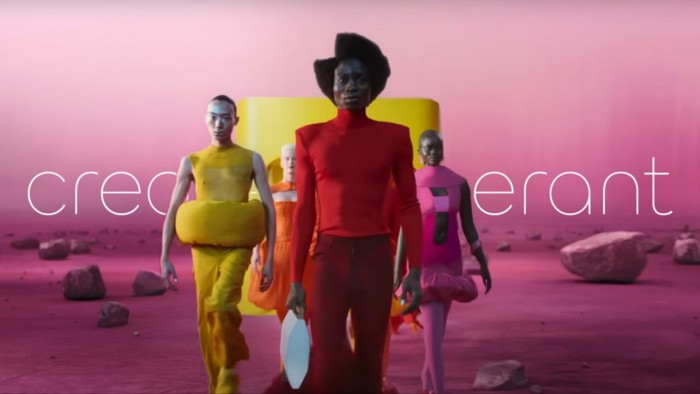Unlock the Editor’s Digest for free
Roula Khalaf, Editor of the FT, selects her favourite stories in this weekly newsletter.
The boss of Jaguar has defended its “bold” rebranding after a backlash to a new corporate logo and a promotional video that did not feature cars, saying its message had been lost in “a blaze of intolerance” online.
Jaguar Land Rover, the luxury UK carmaker owned by India’s Tata Motors, this week posted a 30-second clip on X and Instagram that featured models dressed in brightly coloured outfits to unveil a new company logo that did not feature the iconic “leaper” big cat.
The Jaguar campaign drew more than 160mn views on social media but also the ire of some car enthusiasts, activists and influencers who were angered that the 90-year-old brand was “going woke” and “throwing away heritage”.
Jaguar managing director Rawdon Glover said in an interview with the Financial Times that the intended message had been lost in “a blaze of intolerance” on social media and denied that the promotional video was intended as a “woke” statement.
“If we play in the same way that everybody else does, we’ll just get drowned out. So we shouldn’t turn up like an auto brand,” Glover said.
“We need to re-establish our brand and at a completely different price point so we need to act differently. We wanted to move away from traditional automotive stereotypes.”
Glover said that while the overall buzz of the new campaign had been “very positive”, he was disappointed by “the level of vile hatred and intolerance” in the comments regarding the individuals that appeared in the video.
The teaser was meant to be the start of a crucial promotional campaign to revive the ailing Jaguar brand, which plans to go all electric by next year. But the promotion unexpectedly stumbled ahead of the unveiling of its new electric GT model at the Miami Art Week next month.
It is part of a broader rebranding that also involved replacing the leaper from the front of its car with a double J logo, although the big cat still appears with a new “strikethrough” look on a different part of the vehicle.
Some advertising executives expressed shock that a heritage company had embraced such a radical makeover. “You can destroy a brand in 30 seconds that took a lifetime to build,” said one senior advertising executive who has worked with the Jaguar brand.
“Strong brands reinvent themselves but always remain true to the core of their DNA. For luxury brands in particular, authenticity is key and this fails the test.”
Elon Musk, the billionaire chief executive of X who often uses his prominent profile to wade into culture war issues, shared the ad with his 205mn followers, asking: “Do you sell cars?”
Jaguar is the latest company to face a consumer backlash over its decision to move away from well-established brand heritage in an attempt to try to find a new, younger audience.
Sales in Bud Light plummeted last year after a transgender influencer, Dylan Mulvaney, was used in a social media promotion. Owner Anheuser-Busch, whose beer is seen as a stalwart of the working-class American drinker, was later forced to change its marketing strategy amid calls for a boycott of the beer.
An Apple iPad advertisement showing musical instruments, cameras and artworks being crushed by a giant hydraulic press also provoked outrage among consumers over the level of destruction. Apple made a rare apology and pulled the ad’s TV airtime.
Advertising executives said Jaguar’s new branding already felt outdated, noting recent industry efforts to focus more on driving sales using established brand principles and a move away from campaigns seen as woke or worthy.
Automotive industry leaders also said the rebrand was a significant gamble. JLR’s new luxury electric models that will come out from next year will be priced above £100,000, more than two times its existing offerings.
As it completes its shift to electric vehicles, the company has stopped selling new cars in Britain and mostly ended production of its iconic petrol models.
JLR executives say the company wants to target younger and wealthier customers and to recreate its image as a pure luxury brand than a legacy automotive brand.
“This is not a depiction of how we think our future customers are,” Glover said. “We don’t want to necessarily leave all of our customers behind. But we do need to attract a new customer base.”
Read the full article here

